一開始,,它是一種神秘的,、類似肺炎的疾病,。首批病例出現(xiàn)在中國商業(yè)重鎮(zhèn),、擁有1100萬人口的湖北省武漢市。最早發(fā)現(xiàn)病毒的地點是當?shù)匾患液ur市場,。感染者的癥狀表現(xiàn)為發(fā)燒,、呼吸急促和身體疼痛。當?shù)毓賳T早前稱,,沒有明確的證據(jù)表明這種病毒能在人際之間傳播,。
但事實并非如此。
這樣的傳播確實發(fā)生了,,而且速度驚人,。在新型冠狀病毒獲得正式命名的五天后,,泰國確診了中國大陸以外的首個病例。短短幾周,,幾乎所有的亞洲國家都出現(xiàn)了感染者,。
根據(jù)約翰·霍普金斯大學的數(shù)據(jù),新型冠狀病毒肺炎(COVID-19)已經(jīng)抵達一個令人驚悚的全新里程碑——全球確診患者達10萬人之眾,。
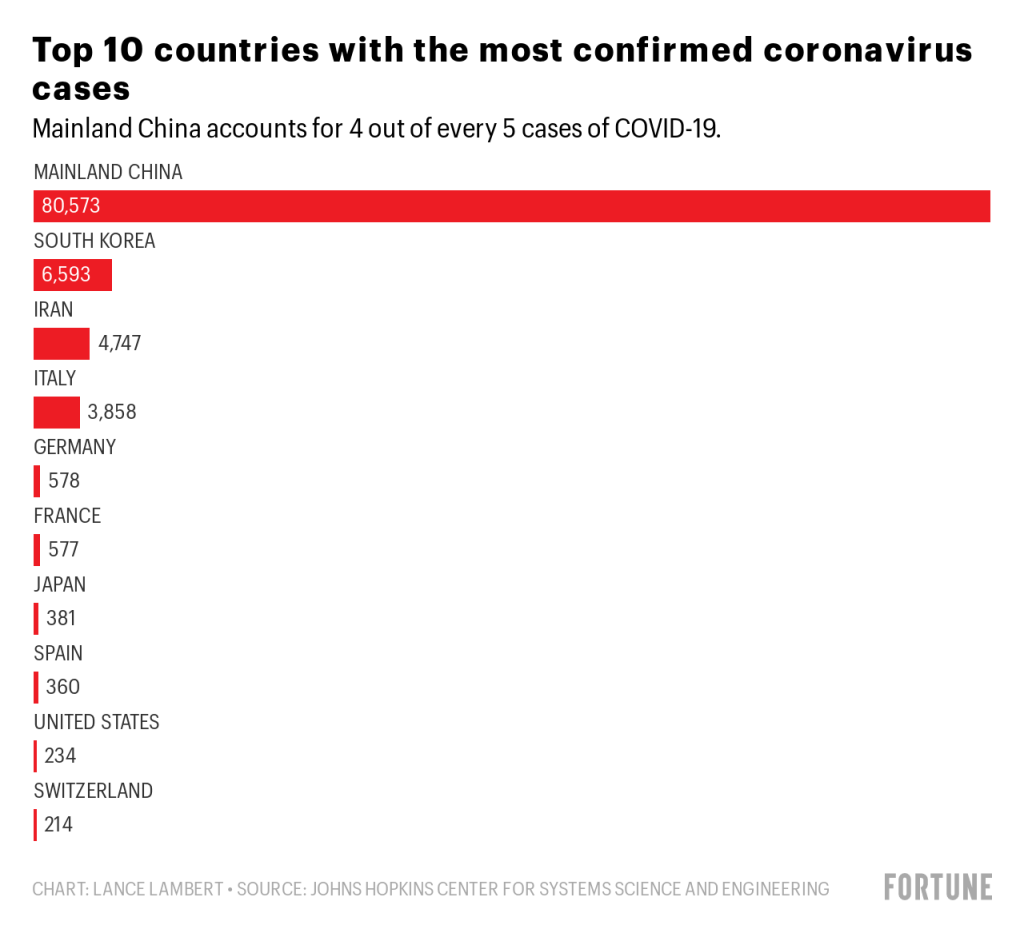
湖北省仍然是新冠疫情最嚴重的地區(qū),但此次疫情在全球的持續(xù)蔓延,,新的“重災區(qū)”出現(xiàn)——首先是亞洲一些最大的經(jīng)濟體,,然后在歐洲和中東部分地區(qū)集中爆發(fā)。在洶涌疫情的沖擊下,,人為設定的邊界顯得脆弱不堪,,世界各國緊密而廣泛的聯(lián)系在此次疫情中彰顯無遺。病毒所到之處,,給人類留下了一系列亟待汲取的慘痛教訓,。
在新冠肺炎患者數(shù)量超過10萬之際,讓我們來回顧一下它在全球的傳播路徑,。
日本和“鉆石公主號”郵輪
1月16日,,日本確診了首例新冠病毒感染病例,患者是一位有武漢旅行史的中國男子,。在接下來的一周,,日本又確診兩起病例,兩名患者都是來自武漢的中國公民,。但很快就出現(xiàn)了社區(qū)傳播跡象——1月28日確診的一位男性患者從未去過中國,。
盡管有證明表明社區(qū)傳播已經(jīng)開始,而且每年訪日的中國游客數(shù)不勝數(shù),,但日本政府卻遲遲沒有制定一套應對病毒爆發(fā)的計劃,。直到2月25日,安倍內(nèi)閣才勉強采取了一項旨在防止社區(qū)傳播的“基本方針”,,此時距離世界衛(wèi)生組織將新冠疫情列為“國際關(guān)注的突發(fā)公共衛(wèi)生事件”已過了近一周時間,。而早在三周前,“鉆石公主號”郵輪就??吭跈M濱港,,向日本發(fā)出了最為嚴峻的病毒傳染挑戰(zhàn)。
1月25日,,一位“鉆石公主號”乘客在香港下船,;一周后,其新冠病毒檢測呈陽性,。彼時,,這艘郵輪已經(jīng)返回橫濱港,,但擬定在2月4日再次啟航。日本政府緊急叫停這項航行計劃,,以便衛(wèi)生防疫人員上船對乘客進行病毒篩查,;他們發(fā)現(xiàn)了10個病例。相關(guān)部門隨即對“鉆石公主號”采取隔離措施,,3700名乘客和船員全部不得下船,。
2020年2月20日,日本橫濱港,。乘客們站在“鉆石公主號”郵輪的甲板上,。因出現(xiàn)新冠疫情,這艘郵輪被強制隔離在大海上,。
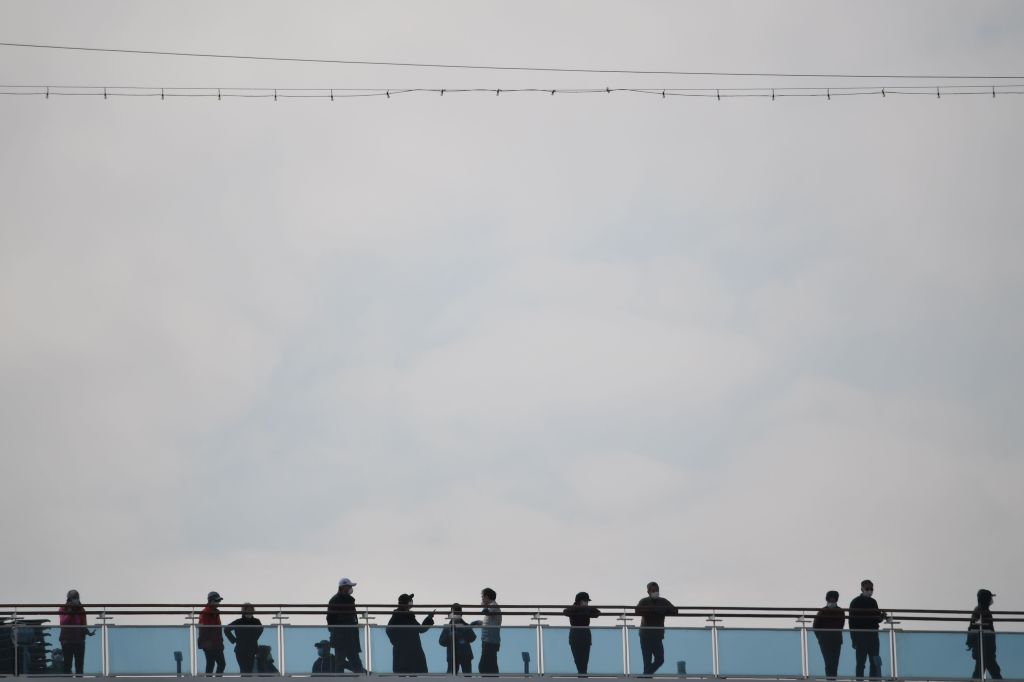
在長達一個月的隔離期,,船上的感染人數(shù)激增到706人,日本政府也因思慮欠周的應對方式而飽受批評,。郵輪上采取的防控措施,,未能有效地將病毒感染者與其他乘客分離開來,最終導致整個隔離計劃流于形式,。
大多數(shù)從船上遣返的外國旅客回到本國后,,還必須再接受14天的隔離檢疫。但東京方面則允許那些在船上至少度過14天,、病毒檢測呈陽性的日本居民下船,,自行回家。
一些下船的乘客后來檢測出陽性病毒,,而他們已經(jīng)在日本各地奔波了數(shù)百公里,,很有可能在沿途感染了其他人。據(jù)世界衛(wèi)生組織,,日本到3月10日有514例確診病例,。與新加坡這種城邦國家不同,日本病例的傳播途徑幾乎無從尋覓,。
新加坡
1月23日,,新加坡報告了首例新冠肺炎病例,患者是一名從武漢抵達該國的中國婦女,。據(jù)世界衛(wèi)生組織,,到3月10日,,該國累計確診病例已上升到160例,。新加坡衛(wèi)生部表示,截至9日已有93例患者治愈出院,,目前還沒有死亡病例,。這份成績單讓新加坡成為遏制疫情的一大成功典范,。然而,這個城邦國家的經(jīng)驗并不容易復制,。
新加坡應對疫情的關(guān)鍵一環(huán)是,,政府對其治下的600萬居民實施鐵腕控制。憑借執(zhí)政黨的強勢地位,,新加坡當局能夠在幾乎沒有公眾輿論阻力的情況下,,采取一系列果敢行動。已有2000多人被官方隔離,。不僅如此,,政府還嚴密監(jiān)視他們的一舉一動,并對違規(guī)者處以嚴懲,。一對夫婦因為謊報旅行記錄而被罰款,,一名外籍工人因為違反隔離令而被驅(qū)逐出境。
在一定程度上,,新加坡的抗疫成就得益于2003年對抗非典(SARS)的經(jīng)驗,,當時有238例感染者,33人死亡,。這場悲劇促使政府為各大醫(yī)院設置隔離設施,,還建立了一家專門應對傳染病的疾控中心。
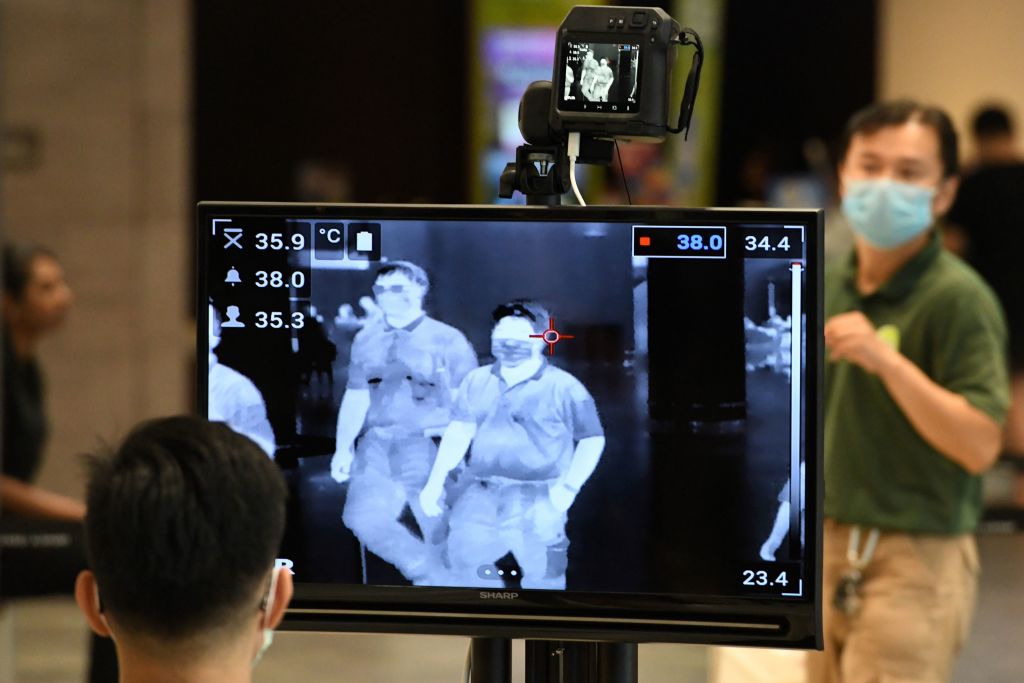
盡管反應迅速,,準備充分,新加坡仍然成為一起“超級傳播者”事件的原爆點,。1月下旬,,英國氣體分析儀器公司仕富梅(Servomex)在新加坡君悅酒店召開了一場商務會議。就是在這場會議上,,一位與會者不慎中招,,并在經(jīng)由法國返回英國的途中,不知不覺地把病毒傳染給了另外11人,。其中5人在法國確診,,1人在返回西班牙馬略卡島后病毒檢測呈陽性。
隨著“超級傳播者”謠言不脛而走,,各大媒體競相確認這位將病毒傳播到全球各地,,并帶回英國的人究竟是何方神圣。謎底最終揭曉,,這個神秘男子居住在英格蘭南部的霍夫市,,并在那里留下了5例繼發(fā)性感染病例,。此后,當?shù)匾晃会t(yī)生被確診,,另外30名醫(yī)生已經(jīng)自我隔離,,以防萬一。
該男子隨后發(fā)表聲明,,要求媒體尊重他的隱私,。然而,在各國政府竭力遏制疫情蔓延的當下,,這項個人權(quán)利正受到越來越多的質(zhì)疑,。新加坡之所以能有效阻止病毒傳播,在很大程度上是因為政府能夠及時追蹤感染病例,,并精確識別傳染點,。不止于此,政府還公開了大量數(shù)據(jù),,包括確診病例的家庭和供職單位地址,。
韓國
就在新加坡采用大規(guī)模監(jiān)控手段之際,韓國開始通過大規(guī)模病毒檢測來對抗新冠疫情,。
1月20日,,韓國報告了第一起新冠確診病例,但在此后的一段時間,,該國的疫情基本上得到控制——直到2月18日,,病毒突然在位于韓國南部的大邱市集中爆發(fā)。據(jù)調(diào)查,,此次疫情與韓國新天地教會旗下一個支派有關(guān),。
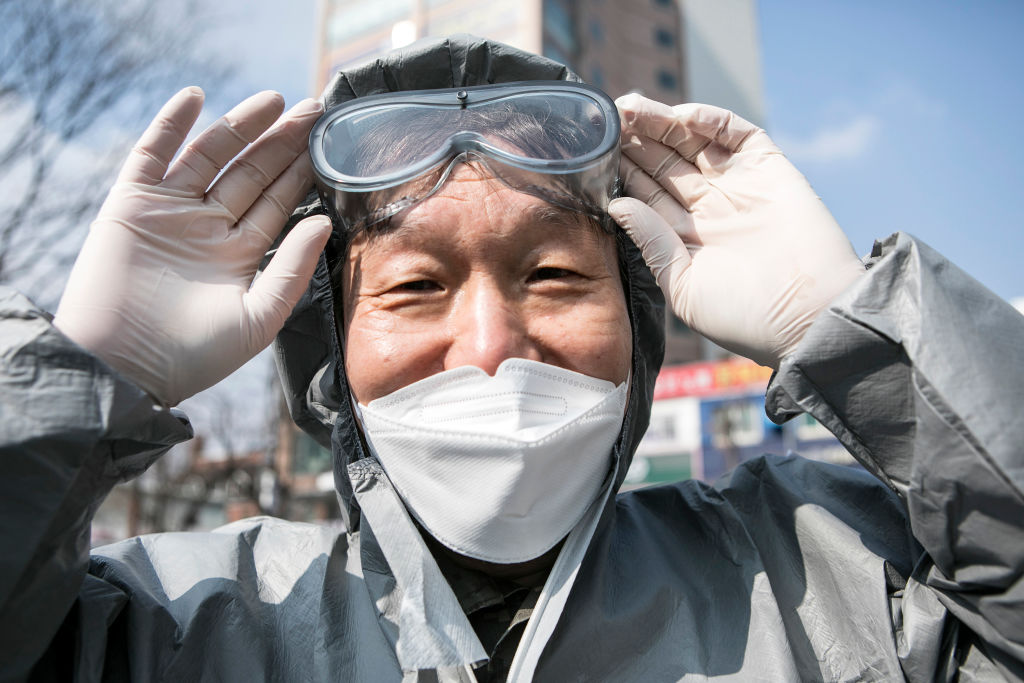
一位61歲的婦女被確定為新天地教徒群的“零號病人”;她經(jīng)常參加教會禮拜活動,,據(jù)說她特別喜歡跟教友進行密切的身體接觸,。截至3月1日,韓國衛(wèi)生官員已追蹤到至少3736例跟該女子有關(guān)的確診病例,。截至3月6日,,韓國累計報告6500例確診病例,至少有40人死亡,。
這名女子最近沒有中國旅行史,,但她的病例揭示出中韓兩國民眾的官方和隱秘聯(lián)系已經(jīng)達到何等緊密的程度。根據(jù)中國2010年的人口普查數(shù)據(jù),約有100萬中國公民居住在韓國,,居住在中國的韓國人至少有12萬。盡管新天地教會被中國官方禁止,,但這個神秘的極端基督教教派在武漢擁有一個信徒多達數(shù)百名的分支,。最近,至少有一些居住在大邱市的新天地教徒去過武漢,。
應對這場危機時,,韓國政府沒有像中國那樣采取強制封鎖措施,而是聯(lián)合生物科技公司開展了一場規(guī)??涨暗臋z測行動,。迄今已有數(shù)十萬人接受病毒檢測,其中一些檢測是通過“得來速式”診所進行的,。

此外,,韓國政府還對新天地教會本身采取了突襲搜查行動。在記者會上,,新天地教會會長李萬熙首次公開發(fā)聲,,并向民眾跪地道歉,但鑒于該教會向防疫部門隱瞞信息,,致使疫情爆發(fā)式增長,,韓國檢方據(jù)稱仍然會以過失殺人等罪名向其提出刑事控告。
意大利
在意大利,,新冠疫情充分暴露了該國北部的倫巴第大區(qū)與中國浙江省的深層聯(lián)系,,盡管兩地相隔9000公里。
意大利政府在1月下旬報告稱,,兩名在羅馬觀光的中國游客成為該國頭兩例新冠確診病例,。但當局現(xiàn)在認為,這兩名中國公民并沒有感染其他人,。在接下來的幾周,,新增感染人數(shù)一直在低位運行。意大利總理朱塞佩·孔特當時表示,,這是因為意大利采取了歐洲“最嚴格”的預防措施,。
但好景不長,意大利政府在2月21日報告稱,,在倫巴第大區(qū)所轄的科多尼奧鎮(zhèn),,一名38歲男子感染了新冠病毒,但并不清楚這位名叫馬蒂亞的男子是如何感染的,因為他最近沒有去過中國,。不過,,由于馬蒂亞引發(fā)該地區(qū)病例爆炸式增長,他被確定為“零號病人”,。在馬蒂亞確診后一周內(nèi),,意大利北部地區(qū)共出現(xiàn)了888例確診病例。當局為此封鎖了該國北部多個城鎮(zhèn),,全面禁止體育賽事等大型集會,,并暫時關(guān)閉了全國所有的中小學和大學。
這波疫情也標志著一些首次報告的確診病例正在從境外輸入中國,。浙江省3月2日報告稱,,8位從意大利倫巴第大區(qū)回國的中國公民被確診為新冠肺炎患者。目前有30多萬中國人居住在意大利,,其中約90%來自浙江省,。意大利的服裝業(yè)吸引了大批中國工人。
這些境外輸入性病例促使中國政府開始對外國旅客采取隔離措施,,并敦促海外華人不要回國,,以免引發(fā)新的疫情。
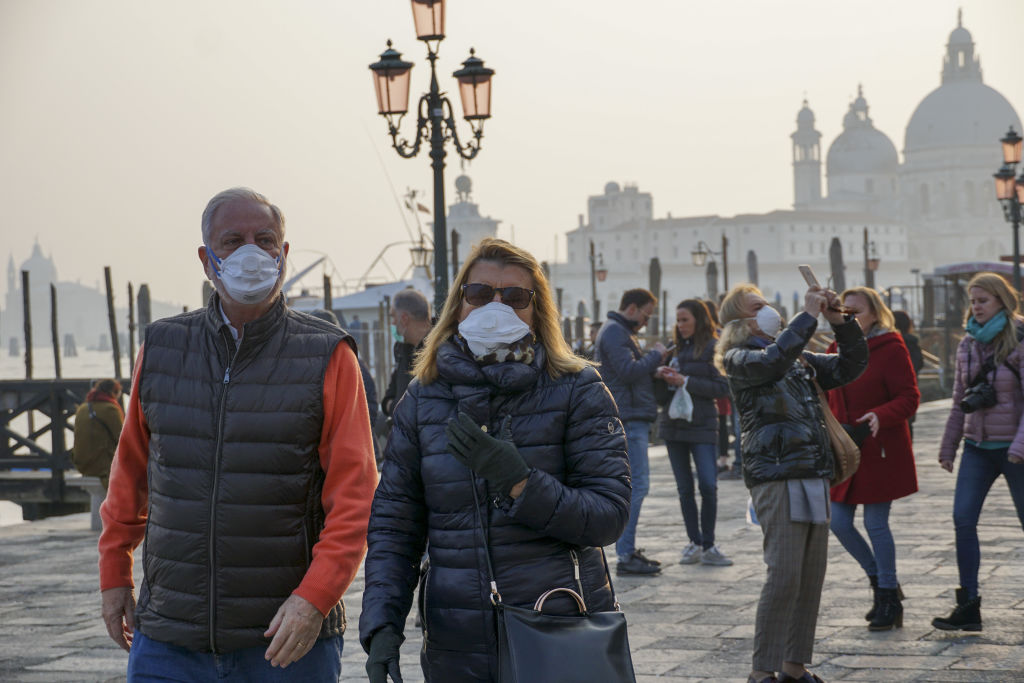
意大利是世界上新冠病毒死亡率最高的國家之一:3858名感染者中有148人死亡,,死亡率接近4%,。它還是世界上老齡人口比例第二高的國家,專家們懷疑,,該國的老年人尤其容易受到致命感染,。
伊朗
就在意大利在疫情爆發(fā)初期吹噓該國確診病例保持低位的同時,伊朗官員也過早地流露出樂觀情緒,。僅僅兩周前,,伊朗官員還在為該國的衛(wèi)生體系唱贊歌,并信誓旦旦地預測稱,,該國不會受到新冠疫情的影響,。此后,伊朗迅速躍升為新冠病毒最大的溫床之一,,截至3月6日,,累計報告近3000確診病例,92人死亡,。
2月19日,,伊朗當局證實,,衛(wèi)生部門在庫姆市發(fā)現(xiàn)該國頭兩起確診病例,當天晚些時候再次發(fā)布通告稱,,這兩位患者都已死亡,。衛(wèi)生部長表示,新冠病毒是一位經(jīng)常往返于庫姆市和中國的商人傳到伊朗的,,這位商人是兩名死者之一,。
自那時起,病毒迅速蔓延到至少另外三座城市,,其中包括首都德黑蘭,。而就在此前,,伊朗官員還表態(tài)稱,,政府不會對城鎮(zhèn)采取隔離措施,也無意關(guān)閉宗教圣地,,并且鼓勵公民前往投票站參加議會選舉,。
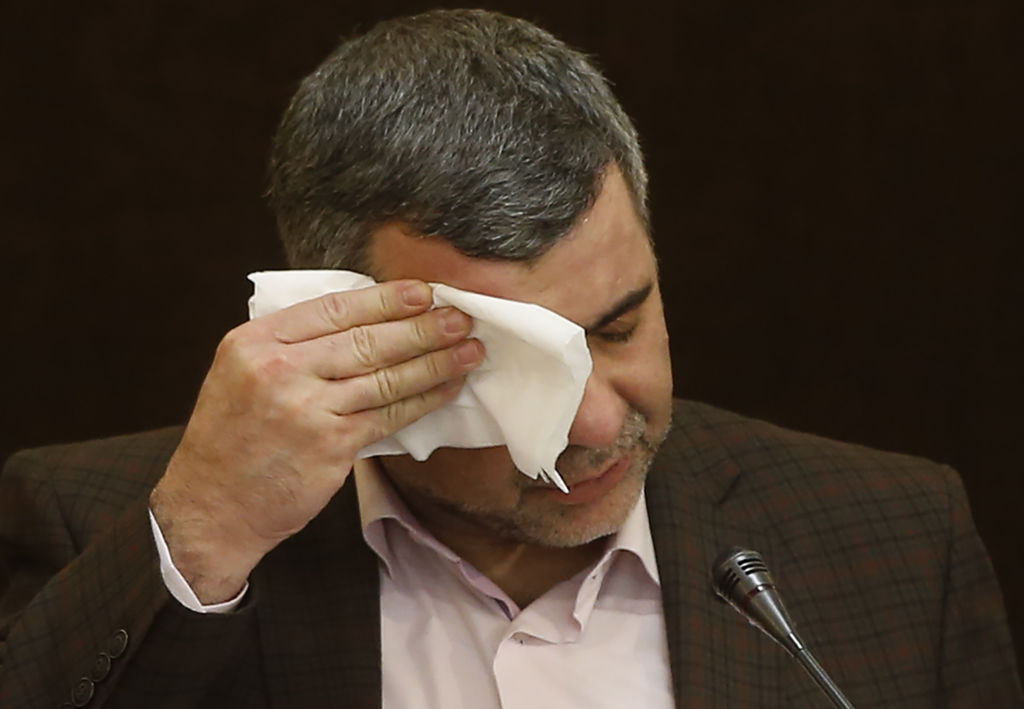
衛(wèi)生部副部長哈利其表示,,截至2月24日,,確診人數(shù)已增至61例。在他宣布這些數(shù)字的新聞發(fā)布會上,,哈利其本人成了媒體關(guān)注的焦點,。就在他淡化新冠疫情嚴重程度的時候,哈利其不時地用手遮擋咳嗽,,還摘掉眼鏡,,頻頻擦拭額頭的汗水。發(fā)布會期間,,甚至有一位工作人員走上講臺,,遞給他一盒新紙巾。
第二天,,哈利其的新冠病毒檢測呈陽性,。
大約8%的伊朗國會議員感染了新冠病毒,伊朗最高領袖的一名高級顧問于3月2日不治身亡,。全國現(xiàn)有超過3500例確診病例,,至少107人死亡。
一些中小學校和大學現(xiàn)已關(guān)閉,,但主要的宗教場所仍然開放,,一名醫(yī)生稱此舉無異于“犯罪”,。(為了控制疫情蔓延,伊朗本周暫停了所有省會城市的周五祈禱活動,。)一些醫(yī)務人員透露稱,,當局警告他們不要亂說話。一名議員說官方數(shù)字是個“笑話”,,并表示真實的感染和死亡人數(shù)要高得多,。
伊朗衛(wèi)生部于上周四表示,政府已經(jīng)批準了多項旨在控制疫情的法案,,還說世衛(wèi)組織對該部門的防疫計劃表示認可,。這些措施包括設立檢查站以限制各大城市之間的旅行,并鼓勵公眾盡可能少地使用紙幣,。
一些觀察家指出,,德黑蘭當局起初不愿限制中國公民入境,是因為政府不愿損害伊朗與其最大貿(mào)易伙伴的關(guān)系,;美國的制裁也可能導致醫(yī)療設備短缺?,F(xiàn)如今,伊朗已經(jīng)成為新冠疫情在中東地區(qū)傳播的原爆點,,該地區(qū)的大多數(shù)新增病例都跟伊朗有關(guān),。
這個病毒很“民主”
迄今為止,新冠病毒至少已蔓延到84個國家,,其傳播速度之快令人震驚,。紐約州州長安德魯·科莫在上周三表示:“防疫之難簡直就像試圖阻止空氣流動?!?/p>
各國政府抗疫的一大舉措是,,嚴格限制哪些人可以穿越哪些邊界。事后來看,,這些舉措確實頗為明智,,但新冠病毒一再突破城市封鎖線和各國的飛行禁令。
在他確診后發(fā)布的一段自拍視頻中,,伊朗衛(wèi)生部副部長哈利其調(diào)侃說:這個病毒很“民主”,。
“從不區(qū)分貧富貴賤?!彼f,。
新冠病毒也不區(qū)分地理位置。從這個意義上說,,它無視國界的傳播性已經(jīng)讓當下的政治氣候陷入極其難堪的境地,。在這樣一個孤立主義甚囂塵上、民族主義情緒日益加劇的時代,,高聳的圍墻正拔地而起,,各種國際集團競相走向瓦解,,但新冠疫情確實是一個全球性問題,我們?nèi)栽谄惹衅诖粋€全球性解決方案,。(財富中文網(wǎng))
譯者:任文科
一開始,,它是一種神秘的、類似肺炎的疾病,。首批病例出現(xiàn)在中國商業(yè)重鎮(zhèn),、擁有1100萬人口的湖北省武漢市。最早發(fā)現(xiàn)病毒的地點是當?shù)匾患液ur市場,。感染者的癥狀表現(xiàn)為發(fā)燒,、呼吸急促和身體疼痛。當?shù)毓賳T早前稱,,沒有明確的證據(jù)表明這種病毒能在人際之間傳播,。
但事實并非如此。
這樣的傳播確實發(fā)生了,,而且速度驚人,。在新型冠狀病毒獲得正式命名的五天后,,泰國確診了中國大陸以外的首個病例,。短短幾周,幾乎所有的亞洲國家都出現(xiàn)了感染者,。
根據(jù)約翰·霍普金斯大學的數(shù)據(jù),,新型冠狀病毒肺炎(COVID-19)已經(jīng)抵達一個令人驚悚的全新里程碑——全球確診患者達10萬人之眾。
湖北省仍然是新冠疫情最嚴重的地區(qū),,但此次疫情在全球的持續(xù)蔓延,,新的“重災區(qū)”出現(xiàn)——首先是亞洲一些最大的經(jīng)濟體,然后在歐洲和中東部分地區(qū)集中爆發(fā),。在洶涌疫情的沖擊下,,人為設定的邊界顯得脆弱不堪,世界各國緊密而廣泛的聯(lián)系在此次疫情中彰顯無遺,。病毒所到之處,,給人類留下了一系列亟待汲取的慘痛教訓。
在新冠肺炎患者數(shù)量超過10萬之際,,讓我們來回顧一下它在全球的傳播路徑,。
日本和“鉆石公主號”郵輪
1月16日,日本確診了首例新冠病毒感染病例,,患者是一位有武漢旅行史的中國男子,。在接下來的一周,日本又確診兩起病例,,兩名患者都是來自武漢的中國公民,。但很快就出現(xiàn)了社區(qū)傳播跡象——1月28日確診的一位男性患者從未去過中國,。
盡管有證明表明社區(qū)傳播已經(jīng)開始,而且每年訪日的中國游客數(shù)不勝數(shù),,但日本政府卻遲遲沒有制定一套應對病毒爆發(fā)的計劃,。直到2月25日,安倍內(nèi)閣才勉強采取了一項旨在防止社區(qū)傳播的“基本方針”,,此時距離世界衛(wèi)生組織將新冠疫情列為“國際關(guān)注的突發(fā)公共衛(wèi)生事件”已過了近一周時間,。而早在三周前,“鉆石公主號”郵輪就??吭跈M濱港,,向日本發(fā)出了最為嚴峻的病毒傳染挑戰(zhàn)。
1月25日,,一位“鉆石公主號”乘客在香港下船,;一周后,其新冠病毒檢測呈陽性,。彼時,,這艘郵輪已經(jīng)返回橫濱港,但擬定在2月4日再次啟航,。日本政府緊急叫停這項航行計劃,,以便衛(wèi)生防疫人員上船對乘客進行病毒篩查;他們發(fā)現(xiàn)了10個病例,。相關(guān)部門隨即對“鉆石公主號”采取隔離措施,,3700名乘客和船員全部不得下船。
在長達一個月的隔離期,,船上的感染人數(shù)激增到706人,,日本政府也因思慮欠周的應對方式而飽受批評。郵輪上采取的防控措施,,未能有效地將病毒感染者與其他乘客分離開來,,最終導致整個隔離計劃流于形式。
大多數(shù)從船上遣返的外國旅客回到本國后,,還必須再接受14天的隔離檢疫,。但東京方面則允許那些在船上至少度過14天,、病毒檢測呈陽性的日本居民下船,,自行回家,。
一些下船的乘客后來檢測出陽性病毒,而他們已經(jīng)在日本各地奔波了數(shù)百公里,,很有可能在沿途感染了其他人,。據(jù)世界衛(wèi)生組織,日本到3月10日有514例確診病例,。與新加坡這種城邦國家不同,,日本病例的傳播途徑幾乎無從尋覓,。
新加坡
1月23日,新加坡報告了首例新冠肺炎病例,,患者是一名從武漢抵達該國的中國婦女,。據(jù)世界衛(wèi)生組織,到3月10日,,該國累計確診病例已上升到160例,。新加坡衛(wèi)生部表示,截至9日已有93例患者治愈出院,,目前還沒有死亡病例,。這份成績單讓新加坡成為遏制疫情的一大成功典范。然而,,這個城邦國家的經(jīng)驗并不容易復制,。
新加坡應對疫情的關(guān)鍵一環(huán)是,政府對其治下的600萬居民實施鐵腕控制,。憑借執(zhí)政黨的強勢地位,,新加坡當局能夠在幾乎沒有公眾輿論阻力的情況下,采取一系列果敢行動,。已有2000多人被官方隔離,。不僅如此,政府還嚴密監(jiān)視他們的一舉一動,,并對違規(guī)者處以嚴懲,。一對夫婦因為謊報旅行記錄而被罰款,,一名外籍工人因為違反隔離令而被驅(qū)逐出境,。
在一定程度上,新加坡的抗疫成就得益于2003年對抗非典(SARS)的經(jīng)驗,,當時有238例感染者,,33人死亡。這場悲劇促使政府為各大醫(yī)院設置隔離設施,,還建立了一家專門應對傳染病的疾控中心,。
盡管反應迅速,準備充分,,新加坡仍然成為一起“超級傳播者”事件的原爆點,。1月下旬,英國氣體分析儀器公司仕富梅(Servomex)在新加坡君悅酒店召開了一場商務會議,。就是在這場會議上,,一位與會者不慎中招,并在經(jīng)由法國返回英國的途中,,不知不覺地把病毒傳染給了另外11人,。其中5人在法國確診,,1人在返回西班牙馬略卡島后病毒檢測呈陽性。
隨著“超級傳播者”謠言不脛而走,,各大媒體競相確認這位將病毒傳播到全球各地,,并帶回英國的人究竟是何方神圣。謎底最終揭曉,,這個神秘男子居住在英格蘭南部的霍夫市,,并在那里留下了5例繼發(fā)性感染病例。此后,,當?shù)匾晃会t(yī)生被確診,,另外30名醫(yī)生已經(jīng)自我隔離,以防萬一,。
該男子隨后發(fā)表聲明,,要求媒體尊重他的隱私。然而,,在各國政府竭力遏制疫情蔓延的當下,,這項個人權(quán)利正受到越來越多的質(zhì)疑。新加坡之所以能有效阻止病毒傳播,,在很大程度上是因為政府能夠及時追蹤感染病例,,并精確識別傳染點。不止于此,,政府還公開了大量數(shù)據(jù),,包括確診病例的家庭和供職單位地址。
韓國
就在新加坡采用大規(guī)模監(jiān)控手段之際,,韓國開始通過大規(guī)模病毒檢測來對抗新冠疫情,。
1月20日,韓國報告了第一起新冠確診病例,,但在此后的一段時間,,該國的疫情基本上得到控制——直到2月18日,病毒突然在位于韓國南部的大邱市集中爆發(fā),。據(jù)調(diào)查,,此次疫情與韓國新天地教會旗下一個支派有關(guān)。
一位61歲的婦女被確定為新天地教徒群的“零號病人”,;她經(jīng)常參加教會禮拜活動,,據(jù)說她特別喜歡跟教友進行密切的身體接觸。截至3月1日,,韓國衛(wèi)生官員已追蹤到至少3736例跟該女子有關(guān)的確診病例,。截至3月6日,韓國累計報告6500例確診病例,至少有40人死亡,。
這名女子最近沒有中國旅行史,,但她的病例揭示出中韓兩國民眾的官方和隱秘聯(lián)系已經(jīng)達到何等緊密的程度。根據(jù)中國2010年的人口普查數(shù)據(jù),,約有100萬中國公民居住在韓國,,居住在中國的韓國人至少有12萬。盡管新天地教會被中國官方禁止,,但這個神秘的極端基督教教派在武漢擁有一個信徒多達數(shù)百名的分支,。最近,至少有一些居住在大邱市的新天地教徒去過武漢,。
應對這場危機時,,韓國政府沒有像中國那樣采取強制封鎖措施,而是聯(lián)合生物科技公司開展了一場規(guī)??涨暗臋z測行動,。迄今已有數(shù)十萬人接受病毒檢測,其中一些檢測是通過“得來速式”診所進行的,。
此外,,韓國政府還對新天地教會本身采取了突襲搜查行動。在記者會上,,新天地教會會長李萬熙首次公開發(fā)聲,,并向民眾跪地道歉,但鑒于該教會向防疫部門隱瞞信息,,致使疫情爆發(fā)式增長,,韓國檢方據(jù)稱仍然會以過失殺人等罪名向其提出刑事控告。
意大利
在意大利,,新冠疫情充分暴露了該國北部的倫巴第大區(qū)與中國浙江省的深層聯(lián)系,,盡管兩地相隔9000公里。
意大利政府在1月下旬報告稱,,兩名在羅馬觀光的中國游客成為該國頭兩例新冠確診病例,。但當局現(xiàn)在認為,這兩名中國公民并沒有感染其他人,。在接下來的幾周,,新增感染人數(shù)一直在低位運行,。意大利總理朱塞佩·孔特當時表示,這是因為意大利采取了歐洲“最嚴格”的預防措施,。
但好景不長,,意大利政府在2月21日報告稱,在倫巴第大區(qū)所轄的科多尼奧鎮(zhèn),,一名38歲男子感染了新冠病毒,,但并不清楚這位名叫馬蒂亞的男子是如何感染的,,因為他最近沒有去過中國。不過,,由于馬蒂亞引發(fā)該地區(qū)病例爆炸式增長,,他被確定為“零號病人”。在馬蒂亞確診后一周內(nèi),,意大利北部地區(qū)共出現(xiàn)了888例確診病例,。當局為此封鎖了該國北部多個城鎮(zhèn),全面禁止體育賽事等大型集會,,并暫時關(guān)閉了全國所有的中小學和大學,。
這波疫情也標志著一些首次報告的確診病例正在從境外輸入中國。浙江省3月2日報告稱,,8位從意大利倫巴第大區(qū)回國的中國公民被確診為新冠肺炎患者,。目前有30多萬中國人居住在意大利,其中約90%來自浙江省,。意大利的服裝業(yè)吸引了大批中國工人,。
這些境外輸入性病例促使中國政府開始對外國旅客采取隔離措施,并敦促海外華人不要回國,,以免引發(fā)新的疫情,。
意大利是世界上新冠病毒死亡率最高的國家之一:3858名感染者中有148人死亡,死亡率接近4%,。它還是世界上老齡人口比例第二高的國家,,專家們懷疑,該國的老年人尤其容易受到致命感染,。
伊朗
就在意大利在疫情爆發(fā)初期吹噓該國確診病例保持低位的同時,,伊朗官員也過早地流露出樂觀情緒。僅僅兩周前,,伊朗官員還在為該國的衛(wèi)生體系唱贊歌,,并信誓旦旦地預測稱,該國不會受到新冠疫情的影響,。此后,,伊朗迅速躍升為新冠病毒最大的溫床之一,截至3月6日,,累計報告近3000確診病例,92人死亡,。
2月19日,,伊朗當局證實,衛(wèi)生部門在庫姆市發(fā)現(xiàn)該國頭兩起確診病例,當天晚些時候再次發(fā)布通告稱,,這兩位患者都已死亡。衛(wèi)生部長表示,,新冠病毒是一位經(jīng)常往返于庫姆市和中國的商人傳到伊朗的,,這位商人是兩名死者之一,。
自那時起,,病毒迅速蔓延到至少另外三座城市,其中包括首都德黑蘭,。而就在此前,,伊朗官員還表態(tài)稱,政府不會對城鎮(zhèn)采取隔離措施,,也無意關(guān)閉宗教圣地,并且鼓勵公民前往投票站參加議會選舉,。
衛(wèi)生部副部長哈利其表示,,截至2月24日,確診人數(shù)已增至61例,。在他宣布這些數(shù)字的新聞發(fā)布會上,,哈利其本人成了媒體關(guān)注的焦點。就在他淡化新冠疫情嚴重程度的時候,,哈利其不時地用手遮擋咳嗽,,還摘掉眼鏡,頻頻擦拭額頭的汗水,。發(fā)布會期間,,甚至有一位工作人員走上講臺,遞給他一盒新紙巾,。
第二天,,哈利其的新冠病毒檢測呈陽性。
大約8%的伊朗國會議員感染了新冠病毒,,伊朗最高領袖的一名高級顧問于3月2日不治身亡。全國現(xiàn)有超過3500例確診病例,,至少107人死亡,。
一些中小學校和大學現(xiàn)已關(guān)閉,但主要的宗教場所仍然開放,,一名醫(yī)生稱此舉無異于“犯罪”。(為了控制疫情蔓延,伊朗本周暫停了所有省會城市的周五祈禱活動,。)一些醫(yī)務人員透露稱,,當局警告他們不要亂說話。一名議員說官方數(shù)字是個“笑話”,,并表示真實的感染和死亡人數(shù)要高得多,。
伊朗衛(wèi)生部于上周四表示,政府已經(jīng)批準了多項旨在控制疫情的法案,,還說世衛(wèi)組織對該部門的防疫計劃表示認可,。這些措施包括設立檢查站以限制各大城市之間的旅行,并鼓勵公眾盡可能少地使用紙幣,。
一些觀察家指出,,德黑蘭當局起初不愿限制中國公民入境,是因為政府不愿損害伊朗與其最大貿(mào)易伙伴的關(guān)系,;美國的制裁也可能導致醫(yī)療設備短缺?,F(xiàn)如今,伊朗已經(jīng)成為新冠疫情在中東地區(qū)傳播的原爆點,,該地區(qū)的大多數(shù)新增病例都跟伊朗有關(guān),。
這個病毒很“民主”
迄今為止,新冠病毒至少已蔓延到84個國家,,其傳播速度之快令人震驚,。紐約州州長安德魯·科莫在上周三表示:“防疫之難簡直就像試
阻止空氣流動?!?/p>
各國政府抗疫的一大舉措是,,嚴格限制哪些人可以穿越哪些邊界。事后來看,,這些舉措確實頗為明智,,但新冠病毒一再突破城市封鎖線和各國的飛行禁令。
在他確診后發(fā)布的一段自拍視頻中,,伊朗衛(wèi)生部副部長哈利其調(diào)侃說:這個病毒很“民主”,。
“從不區(qū)分貧富貴賤?!彼f,。
新冠病毒也不區(qū)分地理位置。從這個意義上說,,它無視國界的傳播性已經(jīng)讓當下的政治氣候陷入極其難堪的境地,。在這樣一個孤立主義甚囂塵上、民族主義情緒日益加劇的時代,,高聳的圍墻正拔地而起,,各種國際集團競相走向瓦解,,但新冠疫情確實是一個全球性問題,我們?nèi)栽谄惹衅诖粋€全球性解決方案,。(財富中文網(wǎng))
譯者:任文科
It started as a mysterious, pneumonia-like illness. Cases of it appeared before Christmas in the Chinese commercial center of Wuhan, population 11 million, traced to a wet market there. It presented in infected patients as a fever, shortness of breath, and body aches. Wuhan officials said early on there was no clear evidence it could be transmitted from human to human.
They were wrong.
Such transmission did occur—at an alarming rate. Five days after it got its coronavirus name, Thailand confirmed the first case outside of mainland China. Within weeks, infections dotted nearly every country in Asia.
Now the coronavirus, which causes the disease COVID-19, has reached the new, ominous milestone of 100,000 global infections, according to Johns Hopkins data.
Wuhan's Hubei Province remains the most affected with 67,600 cases and over 2,900 deaths in total. But the outbreak's ongoing march across the globe has revealed new hotbeds of contagion—first in some of Asia's biggest economies and then in concentrated pockets in Europe and the Middle East. It has exposed borders as flimsy human constructs, underscored the world's vast connectedness, and left a trail of lessons to be learned.
As the coronavirus counter ticks to 100,001, here's a look back at some of the ways it's spread.
Japan and the Diamond Princess
Japan confirmed its first case of coronavirus on Jan. 16. The patient was a man from China who had traveled to Japan from Wuhan. Over the next week, Japan confirmed two more cases, both Chinese nationals who had travelled from Wuhan. But soon there were signs of community transmission, as a case confirmed on Jan. 28 was recorded in a man who had never visited China.
Despite the evidence of community transmission and the high number of Chinese tourists that visit Japan each year, the Japanese government was slow to develop a response plan to the viral outbreak. Tokyo only adopted a “basic policy” to prevent community spread on Feb. 25—nearly a month after the World Health Organization had declared the outbreak a Public Health Emergency of International Concern?and three weeks after the Diamond Princess cruise ship docked in the city of Yokohama, issuing Japan its biggest coronavirus challenge.
A former passenger of the Diamond Princess, who had disembarked in Hong Kong on Jan. 25, tested positive for COVID-19 a week later. By this time, the cruise ship was back in Yokohama but due to depart on Feb. 4. That sailing was cancelled so Japanese authorities could screen passengers?for the virus; they found ten cases. The cruise liner was put under quarantine, with all 3,700 passengers and crew locked on board.
During the month-long quarantine, the number of infected people on the ship swelled to 706 as Japanese authorities faced criticism for bungling the situation. There were no effective quarantine measures on board the ship to separate infected passengers from the others, rendering the quarantine exercise ineffective.
Most foreign passengers repatriated from the ship were subjected to a further 14-day quarantine after arriving home. In Japan, however, Tokyo allowed Japanese citizens who had not yet tested positive for coronavirus to leave the boat and return home after the minimum 14-days on board.
A number of disembarked passengers?later tested positive for coronavirus, having already travelled hundreds of kilometers across the country, risking infection to others along the way. Japan now has 360 cases of coronavirus and, unlike in city states such as Singapore, the route of transmission has become virtually impossible to track.
Singapore
Singapore reported its first case on Jan. 23—a Chinese woman who had flown from Wuhan, the center of the outbreak. Since then, cases have risen to 117; 78 have recovered with no deaths, making the city-state a prime example of how to contain the coronavirus. However, Singapore’s success is not easy to replicate.
The key to tackling the outbreak has been the government’s iron grip on power over its 6 million residents. The strong party rule has allowed authorities to act resolutely with little resistance from the public. Officials have put more than 2,000 people in quarantine, with the government placing them under close surveillance and punishing those who break protocol. A couple was fined for lying about their travel history, and an expat worker was expelled after breaking quarantine.
In a way, Singapore has benefitted from its experience with SARS, or severe acute respiratory syndrome, in 2003 when the city suffered 33 deaths from 238 cases. The tragedy prompted the government to install quarantine facilities in its hospitals and build a dedicated center for infectious diseases.
But despite its swift response and advanced preparation, Singapore still became ground zero for a coronavirus “super spreader” event in late January. An attendee at a business conference hosted by U.K. gas analytics firm Servomex at the Grand Hyatt in Singapore contracted the disease and unwittingly transmitted it to 11 others?as he returned to the U.K. via France. Five of the 11 were confirmed infected in France while one traveled back to Mallorca, Spain, before testing positive.
As rumors of the “super spreader” emerged, media outlets raced to identify the individual who’d carried the virus across the globe and back to the U.K., eventually unmasking him as a man from Hove, in South England, where the five remaining secondary infections took place. One doctor from the area has since been diagnosed with the virus, and 30 other doctors have?isolated themselves as a precaution.
In a statement, the Hove man asked the media to respect his privacy, an individual right that's been called into question as governments struggle to limit contagion. In Singapore, the government’s ability to track cases and identify points of transmission has been integral to interrupting the disease’s spread—but the state also makes a lot of that data publicly available, including the home and business addresses of patients.
South Korea
Whereas Singapore has deployed mass surveillance to combat the coronavirus, South Korea has turned to mass testing.
South Korea reported its first confirmed case of coronavirus on Jan. 20, but the disease remained mostly contained in the country until Feb. 18, when an outbreak tied to a branch of Shincheonji Church of Jesus, a secretive extreme Christian sect, popped up in the southern city of Daegu.
A 61-year-old woman became known as patient zero of the Shincheonji cluster; she’d attended church services regularly and was known for fostering close physical contact with fellow worshippers. As of March 1, South Korean health officials had traced at least 3,736 confirmed cases to her. In total, South Korea has reported more than 6,500 infections and at least 40 deaths as of Friday.
While the woman had not recently traveled to China, her case exposes how intertwined China and South Korea’s populations are in official and under-the-radar ways. An estimated 1 million Chinese nationals live in South Korea, and there are at least 120,000 South Koreans living in China, according to China’s 2010 census. While religion is officially banned in China, the Shincheonji Church has a branch with hundreds of followers in Wuhan, which at least some Daegu-based parishioners had visited recently.
Rather than impose lock-down style measures as China did, South Korean authorities and biotech companies mobilized an expansive testing operation in response to the crisis, testing hundreds of thousands of people, some via drive-thru style clinics.
South Korea has also cracked down on the Shincheonji church itself. Church leader Lee Man-hee bowed on the ground begging for forgiveness during a press conference on Monday, but authorities are reportedly still pursuing homicide charges against him due to the church hiding information about the outbreak.
Italy
In Italy, the coronavirus has revealed the deep ties between two regions—Lombardy in the country's north, and Zhejiang in China's south, separated by 9,000 kilometers.
In late January, Italian authorities confirmed the first two cases of coronavirus from two Chinese tourists in Rome, but authorities now believe that the two Chinese nationals did not infect anyone else. For weeks, new infections remained low and at the time the Italian Prime Minister Giuseppe Conte said it was because Italy employed the “most rigorous” prevention measures in Europe.
But on Feb. 21, Italy reported that a 38-year-old man identified as Mattia had coronavirus in Codogno, a small town in Italy’s northern Lombardy region. How Mattia became infected remains unclear as he had not recently traveled to China, but he became known as patient zero for triggering a surge in cases across the region. In the week after Italy confirmed Mattia’s case, 888 people were diagnosed with the disease across northern Italy. In response, authorities quarantined towns across northern Italy, banned large gatherings like sporting events, and temporarily closed all schools and universities nationwide.
Italy’s outbreak has also marked some of the first reported cases of coronavirus being imported back to China. Qingtian, a small county in China’s southeastern Zhejiang province, confirmed eight new cases of coronavirus on March 2 from Chinese nationals living in Italy’s Lombardy region. There are more than 300,000 Chinese nationals living in Italy, and roughly 90% of them in the Zhejiang Province; the garment industry there has attracted Chinese workers.
These imported cases prompted Chinese authorities to begin quarantining foreign travelers and urging overseas Chinese populations to stay away in fears of they might lead to new outbreaks.
At nearly 4%, Italy has one of the highest death rates of coronavirus in the world, as 148 of 3,858 infected people have died. Italy has the world’s second-oldest population, and experts suspect that the country’s elderly citizens are particularly vulnerable to fatal infections.
Iran
Just as Italy had touted its low caseload early in the outbreak, officials in Iran also spoke too soon. Just two weeks ago, officials in Iran, praising the country’s health system, predicted the country would not be affected by the coronavirus outbreak. Iran has since become one of the biggest hotbeds of the disease, logging nearly 3,000 cases and 92 deaths.
On Feb. 19, Iran confirmed its first two cases in the city of Qom—and later that day said both people had died. The health minister said the virus arrived in Iran via a merchant who frequently traveled between Qom and China and who was one of the two deaths.
The virus has since spread to at least three more cities, including Tehran, the capital, after officials said they would not put towns under quarantine or close religious pilgrimage sites; they encouraged citizens to go to the polls for parliamentary elections.
By Feb. 24, cases had jumped to 61, according to deputy health minister Iraj Harirchi. At the press conference to announce the figures, Harirchi's own condition became a focus. As he downplayed the virus’s spread, Harirchi coughed into his hand and removed his glasses to wipe sweat from his brow so often that at one point someone stepped onto the podium to hand him a new box of tissues.
The next day, Harirchi tested positive for COVID-19.
Around 8% of Iran’s members of parliament have contracted the virus, and a senior advisor to Iran’s supreme leader died of the disease on March 2.?The nation now has more than 3,500 cases; at least 107 people have died.
Some schools and universities are closed, but major religious sites remain open, a move one doctor?described as "criminal."?(Iran has halted Friday prayers in all provincial capitals this week to control the spread of the outbreak.) Medical staff say they have been told to keep quiet about the outbreak. One lawmaker called official numbers “a joke” and said in reality the infection and death counts are much higher.
Iran's health ministry said on Thursday the government had approved several bills aiming to contain the outbreak, and said the WHO approved of the ministry's plans, which include setting up checkpoints to limit travel between major cities and encouraging the public to limit the use of paper money.
Some see Iran’s early opposition to restricting travel from China as government reluctance to jeopardize its relationship with its largest trading partner; U.S. sanctions may be contributing to a medical equipment shortage as well. Iran has become a sort of ground zero of the virus in the Middle Ease, with most of the new cases in the region linking back to Iran.
A 'democratic' virus
That the coronavirus has reached so far—to least 84 countries—so fast is alarming. "This is literally like trying to stop air," New York Governor Andrew Cuomo said Wednesday, as the state confirmed five new cases.
Governments have tried to tame the outbreak, in part, by limiting who can cross what border. And while some of those measures have proven wise in hindsight, the coronavirus has repeatedly defied city lockdowns and countries' flight restrictions.
In a selfie video posted after his COVID-19 diagnosis, Harirchi, the deputy health minister in Iran, said the coronavirus is "democratic."
"It does not distinguish between poor and rich," he said.
Nor it distinguish between geographies. And in that sense, its nature confounds the current political climate. In an era of deepening isolation and nationalist sentiment—of walls being built and blocs being broken—it is truly a global problem, still desperately awaiting a global solution.






